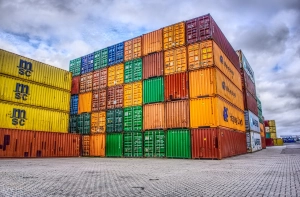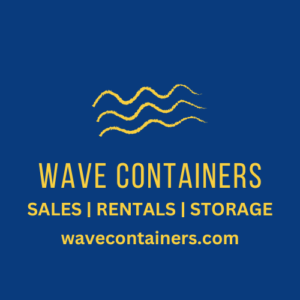The History of the Shipping Container: How a Steel Box Changed Global Trade Forever

The History of the Shipping Container: How a Steel Box Changed Global Trade Forever
It’s hard to imagine a time when international trade wasn’t powered by massive steel boxes stacked on cargo ships, hauled by trains, or pulled across highways. But the now-ubiquitous shipping container is a relatively recent invention — one that transformed the global economy in just a few decades.
This is the story of how a simple idea revolutionized transportation, reshaped ports, and connected the world like never before.
The Pre-Container Era: Chaos at the Docks
Before containers, shipping goods was slow, expensive, and labor-intensive. Items were loaded and unloaded manually, often in sacks, barrels, or wooden crates. Cargo was vulnerable to theft, damage, and delays, and port operations were inefficient and disorganized.
At some busy ports, it could take days or even weeks to fully unload a ship. Laborers—called longshoremen—had to physically handle every piece of cargo. Ships were often idle for long periods, waiting to be cleared, repacked, and refueled.
This outdated method of break-bulk shipping severely limited global trade and added significant costs for businesses.
The Birth of the Shipping Container
The breakthrough came in 1956, when American trucking entrepreneur Malcom McLean launched the first containerized shipping operation. Frustrated by the delays and inefficiencies of port logistics, McLean developed a system that allowed cargo to be packed into uniform metal boxes that could be lifted directly from trucks onto ships — without ever unpacking the contents.
His first ship, the Ideal X, sailed from Newark, New Jersey to Houston, Texas with 58 containers onboard. It wasn’t glamorous, but it was efficient — and it worked.
McLean’s idea took hold quickly. Standardization was the key: by creating containers with consistent sizes (eventually 20-foot and 40-foot ISO containers), companies could move goods seamlessly between ships, trains, and trucks — a concept now known as intermodal transportation.
The Global Boom of Containerization
By the 1970s, container terminals were replacing traditional ports around the world. Specialized cranes and equipment sped up loading and unloading. Ships were redesigned to carry thousands of containers, sparking a new era of maritime logistics.
Containerization slashed shipping costs dramatically. As a result, products could be manufactured in one country and sold in another with minimal logistical friction. This laid the foundation for modern globalization, enabling:
- The rise of manufacturing hubs in Asia
- The dominance of just-in-time inventory systems
- The spread of international e-commerce
Today, over 90% of goods transported globally are moved in containers.
How Shipping Containers Continue to Evolve
While the standard container hasn’t changed much in form, it has evolved in function. Modern variants include:
- Reefers (refrigerated containers) for perishables
- Open-top and flat-rack containers for oversized cargo
- Double-door and side-opening containers for specialized access
Smart containers equipped with GPS and IoT technology now track cargo in real time, improving supply chain visibility and reducing delays.
Containers are also being repurposed in creative ways — from pop-up shops to tiny homes and even swimming pools.
The Legacy of a Simple Steel Box
What began as a modest solution to a trucking problem became one of the most influential inventions of the 20th century. The shipping container turned the world into a connected marketplace — bringing people, products, and ideas closer than ever before.
Whether stacked on a cargo ship or converted into an off-grid office, the humble steel box remains a symbol of efficiency, adaptability, and progress.
Looking for Shipping Containers?
Wave Container Corp offers new and used containers for sale across North America — including dry vans, reefers, flat racks, and more. Reach out today to find the right container for your needs.

Leave a Reply
Want to join the discussion?Feel free to contribute!